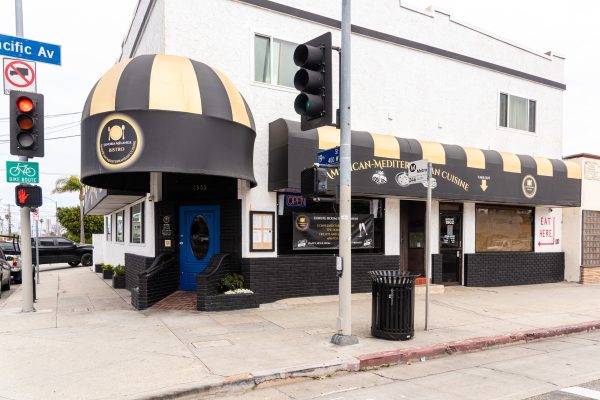
“Rembrandt and the Inspiration of India” at the Getty – a review

But let’s dig in, shall we? This exhibition and its specialty dish of a catalogue was put together by Stephanie Schrader, Curator of Drawings at the Getty, who also organized a somewhat similarly themed show back in 2013 entitled “Looking East: Rubens’s Encounter with Asia.” When asked if there are more such gems in the wings (a pairing of Vermeer and Indonesia, for instance) she said no; she’s gone through the Getty archives and this is it.
And what “this is” is rather intriguing. The Dutch East India Company was established in 1602, and they had a trading post in Surat. Goods of all sort, therefore, traveled one way or the other. Imports, exports. For our purposes, writes Catherine Glynn in the accompanying catalogue, “The appearance of extraordinary and prized Mughal artistic creations in Amsterdam in the middle of the seventeenth century, some of the earliest known material from imperial India to enter Europe, is evidence of diplomatic and commercial exchange at the highest level. When Rembrandt saw them, he was inspired to capture their quality.”

There is good cause to be cautious, and Schrader is certainly upfront about this at the start, posing several questions about the surviving 23 drawings: “Are they even by Rembrandt? Can one trace them to specific, surviving Indian compositions? Do they relate to Rembrandt’s use of exotic costume in his biblical depictions to suggest the distant past?” And, expanding on this line of questioning, “How did art facilitate Dutch and Mughal trade relations? What particular qualities of Indian paintings and drawings inspired Rembrandt? How did his Indian compositions help shape Rembrandt’s global image and make him more marketable at home?”
Some of these questions can be adequately answered, and some less so. But it is no surprise that Rembrandt would have been attracted to these imported works because he was a collector of exotica as we can see by the inventory of his possessions that was drawn up when he was trying to avoid bankruptcy in 1656. As Schrader notes, “Rembrandt’s Mughal copies demonstrate his global connections, his sophisticated taste as a connoisseur, and his curiosity as a student of foreign art.” Robinson echoes this: “As detailed records of grandees from a distant empire, Rembrandt’s copies of Indian paintings represent his aspiration to gain knowledge of the world.”

Dispersal rhymes with universal,and these two have gone hand in hand throughout history whenever a series of paintings or drawings have left their original artist or collector.
Mughal albums, these being codices or stitched books, contain or “contained assemblages of paintings, drawings, calligraphies, and European prints.” These albums reflected the personal taste of the owner, and the contents, as Yael Rice further explains, “lent the album its intimate character: through juxtaposition and collage, the album illuminated its owners filial and other ties, artistic knowledge, aesthetic judgment, dynastic aims, and, of course, cosmopolitan ambitions.”

One might well ask if Rembrandt ever used one or more of his Mughal sketches as the basis of a full-blown painting, but I think the answer is no. That said, it certainly would have been interesting if he had, if he’d transformed the colorful Indian princes and courtiers, etc., into something more shadowy and resonant, comparable to his late religious portraits, which is almost the title of an exhibition mounted at the Getty Museum during the summer of 2005.
While we can’t be exactly sure how much of an impact Mughal art made on the golden age of Dutch painting, it should at least be emphasized that Mughal art was in turn influenced by Dutch and Flemish art, and the show does include a few examples, especially one work referred to as the “Pancake Woman.” But whereas we can rattle off the names of Dutch artists, individual artists working at the Mughal court are less well known. Mostly, they remained anonymous.

The detail in the Indian work is boundless, almost unimaginable, except perhaps to those who saw LACMA’s 1998 “King of the World” exhibition and/or the 2005 “Domains of Wonder” at the San Diego Museum of Art. Showstoppers, all. Also, to get a bit of the flavor of such things and how they were done, I might steer the reader to Orhan Pamuk’s fine novel, “The Book of Red.”
Cross-fertilization makes for new and compelling art, and one never knows what emerges from it. On that note, one shouldn’t miss another current Getty exhibition, “Beyond the Nile,” which focuses on how the art of the Pharaohs commingled with and influenced Hellenistic Greek and Roman art. For the creative community cross-cultural trade and globalization have opened wide many doors.
Rembrandt and the Inspiration of India is on view through June 24 at the J. Paul Getty Museum, 1200 Getty Center Drive, Los Angeles. One further note, in a nod to this exhibition and to your appetite, the Getty Restaurant has prepared a special menu inspired by the cuisine and flavors of India and the Netherlands. It features a Dutch style cheese board for the appetizer, followed by chilled pea soup, then an entrée of rack of lamb, and concluding with a dessert of coconut brûlée. Cost, $75 per person or $89 with wine pairing. (310 440-7300 or go to getty.edu. ER









